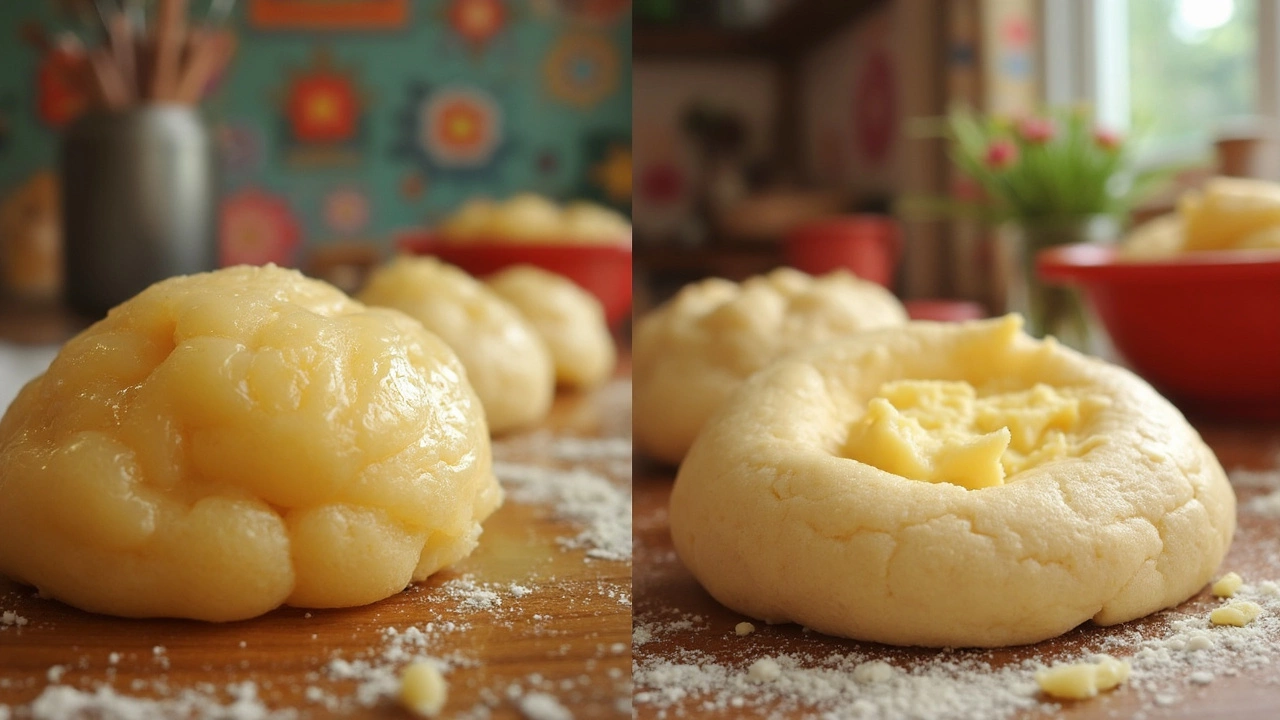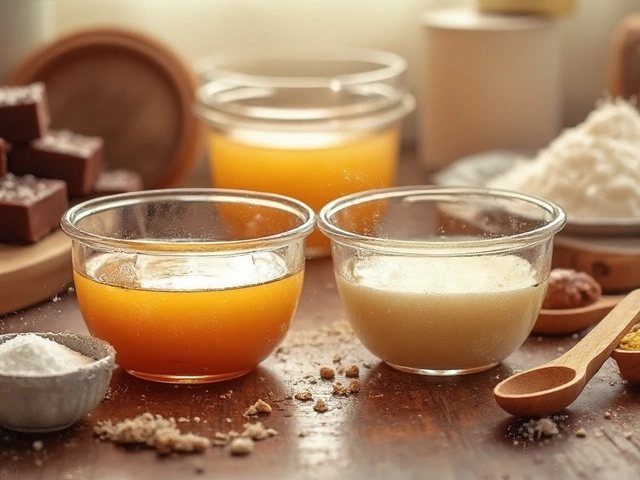Oil vs Butter in Cookies – What’s the Real Difference?
When you reach for the pantry, you’ll see both oil and butter listed in cookie recipes. They’re not interchangeable, though. One can make a cookie spread thin and crisp, the other keeps it soft and flavorful. Knowing how each fat works helps you decide which one fits your taste and texture goals.
How Oil Changes Cookie Texture
Oil is a liquid fat, so it mixes more evenly into the dough. That uniform coating stops gluten from forming too much, which means the cookie stays tender. Because oil doesn’t contain water, you won’t see the steam pockets that butter creates, so the cookie won’t puff up as much.
The result is a flatter, chewier cookie that spreads more during baking. If you love thin, oatmeal‑style drops or a soft, cake‑like bite, using vegetable oil, canola, or coconut oil can get you there. Just remember that oil adds less flavor than butter, so you might need extra vanilla or spices to boost taste.
When to Choose Butter
Butter is a solid fat with about 15‑20% water. As it melts, the water turns to steam, lifting the dough and creating tiny air pockets. Those pockets give cookies a light, airy crumb and a crisp edge. The milk solids in butter also brown, adding that rich, nutty flavor we all recognize.
If you crave a classic chocolate chip cookie with a golden‑brown edge and a buttery aroma, stick with butter. It’s especially good for recipes that rely on creaming butter and sugar together—this step traps air and sets the cookie’s structure.
One trick is to soften butter just enough to cream easily, but not melt it. Over‑softened butter can cause the cookie to spread too thin, losing that desirable thickness.
For a balance of chew and flavor, try a butter‑oil blend. Half butter, half oil gives you the steam‑generated lift from butter and the tender crumb from oil. It’s a quick fix when a recipe feels too dry or too crisp.
Health‑wise, oil has a higher proportion of unsaturated fats, which are generally better for the heart. Butter contains saturated fat, but it also brings vitamins A, D, and K2 from the dairy. If you’re watching calories, oil can be a lighter choice, but you lose the buttery taste that many cookie lovers cherish.
When swapping, use a 1:1 ratio for most recipes, but reduce the oil by a tablespoon for every cup of butter you replace. This prevents excess spread. Also, add a pinch of extra salt to compensate for the flavor loss.
Finally, think about the type of cookie you’re making. Drop cookies, like chewy oatmeal or peanut butter, handle oil well. Cut‑out or rolled cookies, like shortbread or sugar cookies, rely on butter’s solid structure to hold shape.
Experiment with a small batch: bake one set with butter, another with oil, and a third with a blend. Taste the differences in spread, chew, and flavor. You’ll quickly learn which fat matches your favorite cookie style.
Bottom line: butter brings flavor and a crisp edge, oil gives softness and even spread. Use the one that fits the texture you crave, or mix them for the best of both worlds.

Oil or Butter in Cookies: Which Tastes Better?
Choosing between oil and butter for your cookies can impact taste and texture. Oil leads to chewy cookies while butter gives a rich flavor and crispness. Understanding the pros and cons of each helps in crafting the perfect batch for your tastes. Explore interesting tips and make an informed choice. Knowing when to use each can elevate your cookie baking game.
View More




